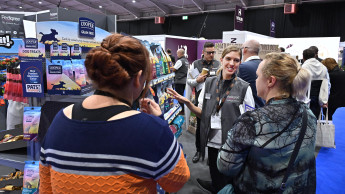

Two years ago, the Brazilian environmental agency, Ibama, submitted a document on freshwater stingrays at the 2004 meeting of the Cites Animals Committee. That document was passed on to the Committee’s Shark Working Group, since stingrays are cartilaginous fishes (i.e. elasmobranchs), just as sharks are
The aim of the document was to focus on regulating trade in South American freshwater stingray species. However, since the proposals and subsequent discussions were not accompanied by supporting evidence, and since no individual species of stingray were mentioned, it was felt that the situation regarding the trade in these fishes lacked any clarity of focus. It was further concluded that the report was based on little and shallow information, omitting even details of the sources of reference or information that were used in its compilation.In the end, no decision was taken, but the indications were that, if detailed data were presented at a subsequent meeting of the Animals Committee, then it might be possible for this committee subsequently to submit a proposal for the next Cites Conference of the Parties (CoP) – the 14th CoP, due to be held in The Hague (The Netherlands), on 3-15 June 2007 – to consider in due course.The next meeting of the Animals Committee is scheduled for 7-13 July in Lima (Peru) and in preparation for this, the Shark Working Group met in London on 4-6 April. Among the items listed for discussion were, not surprisingly, South American freshwater stingrays, with several species (details of which are not available) being considered as potential candidates for listing by Cites in one or other of its two top appendices at the next CoP.The meeting was attended by a trade representative, Keith Davenport, the chief executive of the UK’s Ornamental Aquatic Trade Association (OATA), who reported that despite a generally positive attitude towards the trade in stingrays by the leading delegate on the subject, Dr. Patricia Charvet-Almeida from Belém, Brazil, a plea was made for the listing of at least several species.According to Dr. Charvet-Almeida, around 25 000 stingrays are exported from Brazil each year, a figure which exceeds the annual export quota of 17 000. All figures must be regarded as approximate, as no detailed export data are available, but if the estimate is correct, this means that around 7 000 freshwater stingrays are currently being exported illegally from Brazil. Figures for other exporting countries were not mentioned, but it is estimated that total annual world demand for freshwater stingrays stands at around 50-60 000 specimens, an amount that could possibly be met by another exporting country (Peru) out of its own stocks.Complicating matters with regard to nominating species for listing is the difficulty that exists in…
Related articles
Read also

 Menü
Menü






 7-8/2006
7-8/2006












 Newsletter
Newsletter